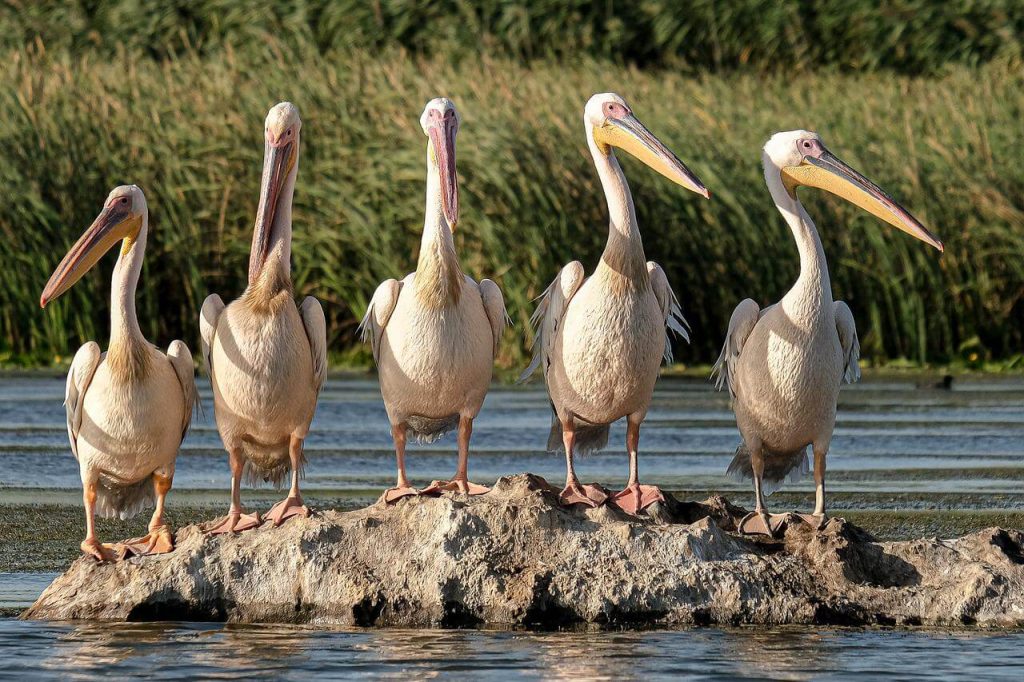To the great surprise of ornithologists and nature lovers in the Parila lagoon, a great white pelican nestling (Pelecanus onocrotalus) appeared three years ago. It is a bird species that was presumed to have become extinct in the entire Republic of Croatia in the 1950s due to uncontrolled hunting and fishing and the reclamation of wetlands, which damaged ornithological habitats. However, pelicans have appeared at the mouth of the Neretva for the last five years, once again becoming a bird’s paradise. Thus, several species of wetland birds were observed, with various ducks, grebes, herons, and spoonbills, reports Slobodna Dalmacija.
Mediterranean wetlands are globally known for the exceptional diversity and richness of the bird world. Unfortunately, due to over-intensive hunting and carelessness, the Neretva Valley has fallen from the list of the most famous and richest Mediterranean wetlands, such as the Camargue in France, Donana in Spain, and several lagoons in Italy, Turkey, and Tunisia.
“Despite all the problems – reed fires, invasive species such as mongooses, poaching, river flow regulation (hydropower and sewerage), reduction of freshwater inflows (interventions in BiH), illegal land reclamation, etc., the Neretva Delta remains one of the best destinations for bird watching in Croatia. In the Neretva valley, you can see the partridge, Western black-eared wheatear, or the barn owl.
Due to its large reed beds, the Neretva is a vital nesting ground for Eurasian bitterns and Porzana species. In addition, the sandy lagoons at the mouth of the Neretva are alive all year round. More than 300 recorded bird species for such a small area is an impressive number and has the potential to attract tourists throughout the year,” says Iva Rajković Alendar from the association “Biom.”
However, in the field, the changes are noticeable for the better regarding the bird world. Changes happen slowly, but importantly, they do happen. One of the positive changes is new reserves.
“The Special ornithological reserve “Blue Eye and Lake Desna,” Special ornithological-ichthyological reserve “Neretva estuary,” and Special ornithological reserve “Kuti. It is now important that real protection is established in the existing reserves and that the reserves remain on paper. What does not improve the situation is, for example, fires. This year, almost the entire “Pod Gredom” and “Prud” reserves near Metković burned down again. This is a great disaster for birds that depend on the layers of old reeds and because of which the reserves were established,” says Iva.
And while ornithologists are struggling with fires, fortunately, the number of poachers has been reduced. However, the prevailing opinion in the Neretva is that swamps are set on fire by hunters to secure hunting plans. Local hunting associations have repeatedly denied this.
“What can certainly be noticed is the reduced number of poachers. For example, when we started highlighting the problem in 2017, in the Neretva delta for decades in, say, December on Parila, in the Neretva Channel, and the Galičak Bay located in Ušće, you could see 11 to 15 people hunting continuously from 8 pm to sometimes 11 in the morning.
Today it is two to three people. But the number of shots remains worrying. On average, there are 150 shots fired in one night on Lake Parila in the “Neretva Estuary” reserve, and poaching takes place almost every night when there is no rain. There are changes in the reserves “Prud” and “Pod Gredom” near Metković. The number of illegal plans is much smaller, but there are still shootings in the reserves, but invitations are heard less often, which is positive.
But while there is a high demand for the meat of one wild bird, the viability of any shift in the fight against poaching is questionable. On the Neretva, we conducted a socio-economic analysis through which we found that 56 percent of respondents consume coot. Furthermore, 29 percent of respondents consume it regularly. Coot is eaten when hanging out with friends and family or during important holidays. When you visit, there must be a coot on the table in some places. Demand for game meat creates a relatively large market that is satisfied by birds from illegal hunting.”
Despite everything, new bird species are coming to the Neretva.
“The Neretva Delta is special in terms of the bird world. Species rare in other parts of Croatia are common migratory or wintering species. There are numerous ducks, sandpipers, jays, sterninae, pied avocet, and oystercatchers. The Neretva is also on the edge of the range of some completely southern species, such as the olive-tree warbler. The local association “Brkata sjenica” from the Neretva recorded a Eurasian stone-curlew, which is important because the Croatian population is endangered.
All in all, our goal is not to attract new species, but it is important to preserve the habitats for those that are already coming. And then protect them while they are there,” believes Iva Rajković Alendar. Furthermore, given the rich bird world, the Neretva delta has great potential for the development of birdwatching, which is reserved for guests of deeper pockets.
It should not be forgotten that the Neretva Valley is very close to Dubrovnik, whose most numerous visitors are British tourists – the most dedicated bird watchers worldwide. Most of them pass through the Neretva Valley during a trip to Mostar. On the Neretva, birds can be observed throughout the year, and bird watching is one of the branches of tourism that can take place throughout the year. However, the creation of a tourist product and its promotion on the market is yet to take place in the Neretva Valley. Instead of realizing this, it has been debated for years whether the Neretva, with its bird wealth, is an area suitable for bird watching.
What should be done to make birdwatching come to life in the Neretva Valley?
“It must be accepted and promoted by the inhabitants of the Neretva Valley, and it is vital to take care of, i.e., raise awareness about the preservation of this valuable resource in the local community. In addition, the area should be promoted at events like BirdFair in England and other fairs. BirdFair is one huge fair dedicated to bird watching.
Various events can be organized at the state level to actively promote the Neretva Valley as a paradise for bird watchers. For example, the Association “Brkata sjenica” is actively working on the development of bird watching in Croatia. Since 2016, they have organized more than ten bird recognition trainings and broadened the community of fellow citizens who also come as tourists to the Neretva delta to observe birds.
There are many similar examples in the world. The best, of course, are the numerous English reserves managed by NGOs such as the Wetland & Wildfowl Trust or the Royal Society for the Protection of Birds (RSPB). In our immediate neighborhood, we can cite the example of Škocjan Bay in Slovenia, where a compromise was found between preserving coastal wetlands and seaports. As a result, Škocjan Bay, with its good infrastructure, has become a prevalent location for bird watching. This is the case in Slovenia, and further south in Montenegro, Albania, and even in our country; it is still necessary to explain why it is crucial to preserve biodiversity and how it is a vital resource.”
For more, check out our dedicated lifestyle section.









